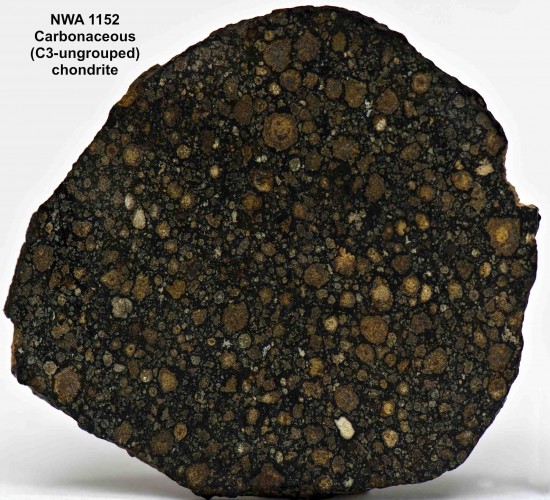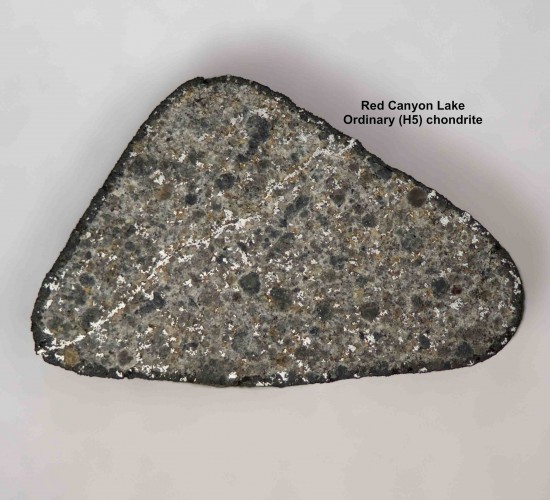Chondrites
The chondrites take their name from chondrules, the nearly spherical, silicate-rich particles they contain. They are the most abundant type of stony meteorite, and contain some of the first objects to have formed in the Solar System, including calcium-aluminum-rich inclusions (CAIs) and chondrules.
Chondrites have never undergone melting. Their chemistry is very primitive because they have had very few chemical interactions with other objects since their formation.
The most common meteorites found on Earth, chondrites account for approximately 86% of all meteorites recovered.
The Meteoritical Society categorizes chondrites by class and chemistry:
- Carbonaceous chondrites generally have Mg/Si ratios near the solar value, and oxygen isotope compositions that plot below the terrestrial fractionation line.
- Ordinary chondrites generally show sub-solar Mg/Si and refractory/Si ratios, oxygen isotope compositions that plot above the terrestrial fractionation line, and a large volume percentage of chondrutes, with only 10-15 volume percent fine-grained matrix.
- Enstatite chondrites generally have sub-solar Mg/Si and refractory/Si ratios, oxygen isotope compositions that plot near the terrestrial fractionation line, and highly reduced mineral assemblages containing little FeO, Si-bearing metal, and sulfides of elements normally considered lithophile





